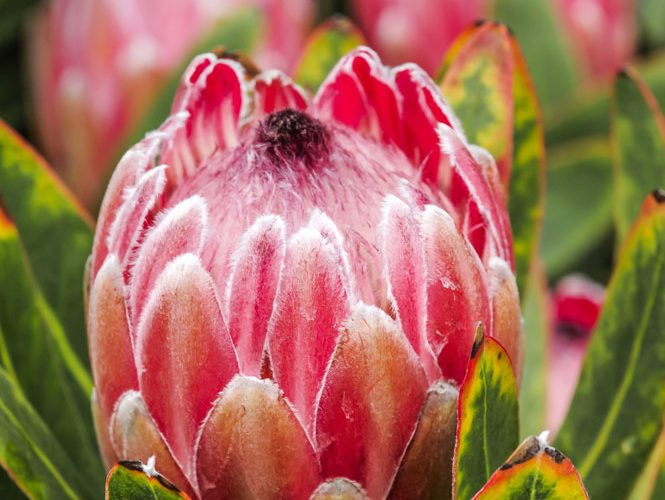Proteas have a reputation for being tricky to grow, but if you follow a few simple guidelines, they’ll thrive in your garden.
The secret to growing proteas in a garden is to mimic their natural growing conditions. Most species originate from the winter-rainfall areas of South Africa and grow in very well-drained, nutrient-poor, acidic soil.
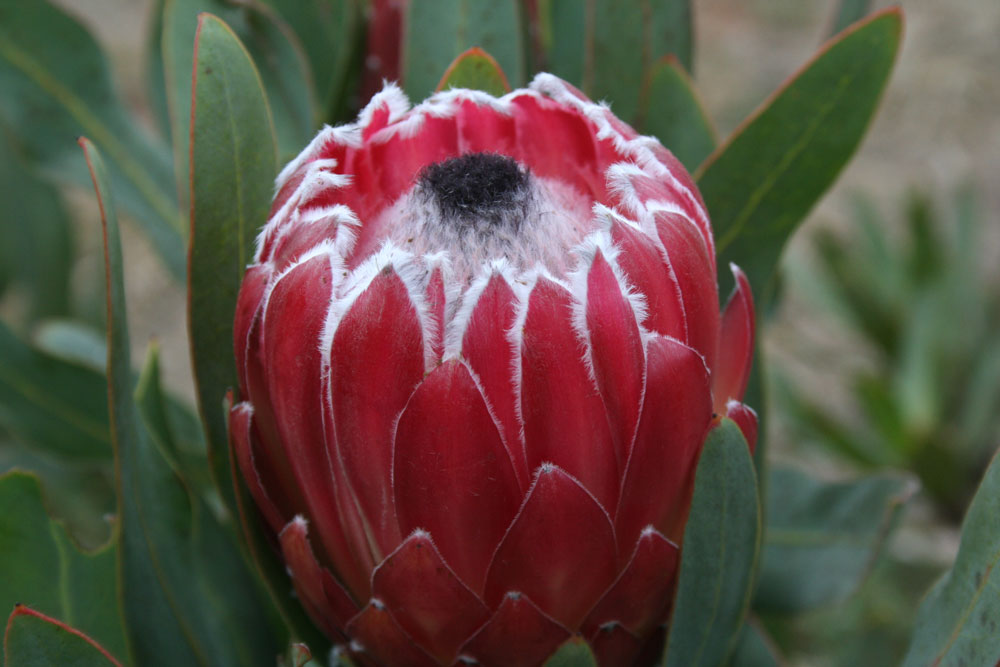
As can be expected from their natural coastal and mountainous habitats, they are used to lots of air flowing around them and plenty of sun. They are ideally suited to low-maintenance and water-wise gardens, and are a magnet for nectar-loving birds.
READ MORE: How to attract garden birds
Their roots are very susceptible to fungal attack so it’s important not to disturb them. When planting, remove the shrub from its container, with as little interference as possible to its roots. Once they’re in the ground, place a thick layer of mulch over the soil’s surface. Not only will this help retain moisture and keep the soil cool, it’ll suppress and reduce the need for weeding, which agitates the ground.
Related to growing proteas: Winter gardening guide
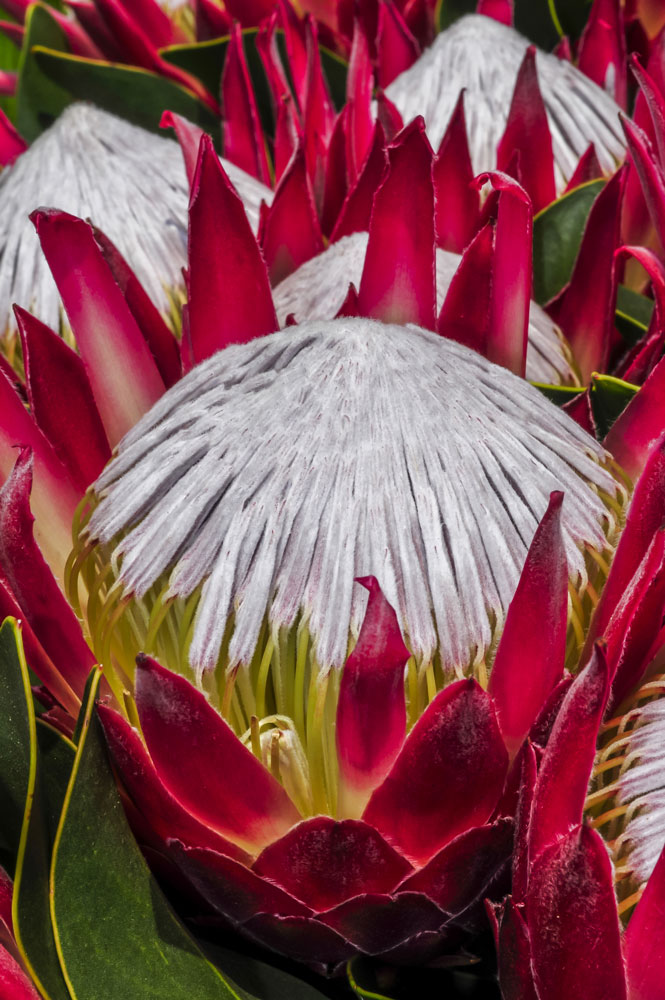
The common sugar bush (Protea caffra) is the most widely distributed protea in South Africa. Until recently, all attempts at growing it commercially proved impossible, but fortunately they’re now available at select nurseries in Gauteng.
READ MORE: Succulents: Growing crassulas
Proteas don’t do well in clay soil. If your soil has a high clay content, try growing them in containers. Some varieties make excellent container plants. Choose large pots and use a good quality, bark-type potting soil and mix a teaspoon of Fyngrow in the soil in the bottom of the pot. Place it in a well-ventilated, sunny position and remember to water well until the shrub is established.
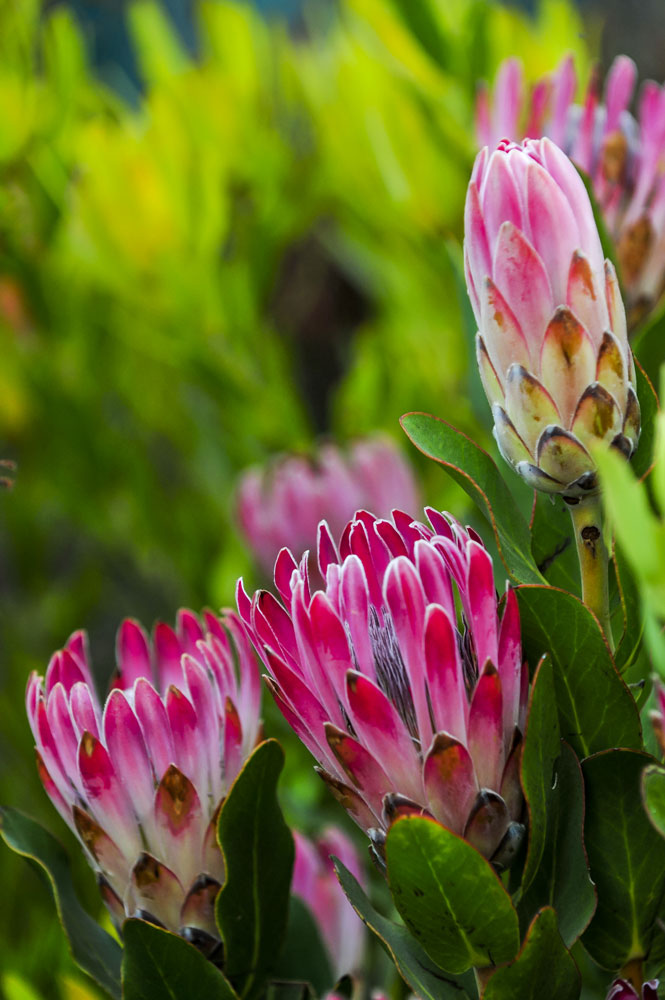
QUICK TIPS
POSITION: Full sun.
PLANT: Year round.
WATER: Moderate.
SIZE: 1–5m high.
FROST TOLERANCE: Most are hardy to -4°C, some varieties to -9°C.
CAUTION: Good drainage is essential.
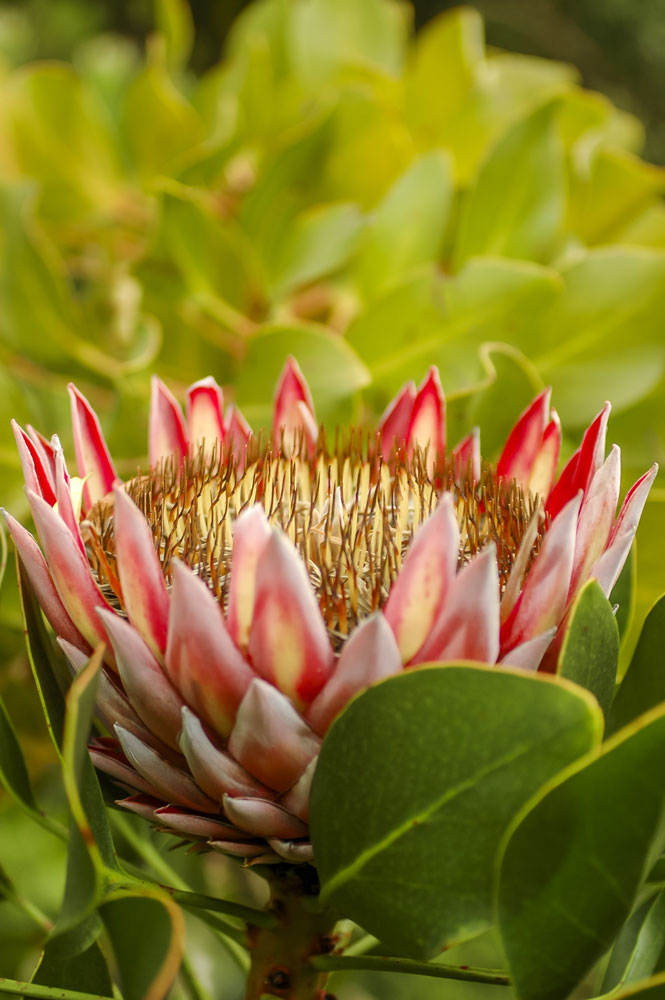
GROWING PROTEAS
- Plant in a sunny position where the air circulates freely around the plant – they love windy areas.
- They thrive in sandy, acidic, well-drained and rocky soils.
- Plant in a hole twice the size of the container the plant came in.
- Water deeply once a week for the first two years after planting. Once established, they are drought tolerant.
- Apply coarse mulch such as bark or wood chips over the roots. This prevents weed growth, keeps the soil cool and provides gradual fertilising. Pine bark and pine needles will also help to acidify the soil.
- It’s generally not necessary to fertilise proteas as they grow naturally in very nutrient-poor soils. Organic fertilisers such as Seagro, Bio Ganic All Purpose and Bio Ocean can be used, if necessary.
- Never disturb the soil around the roots.
- If they show signs of yellowing, apply Wonder Ferrofood granules or any other iron chelate product once, using the lowest recommended dose.
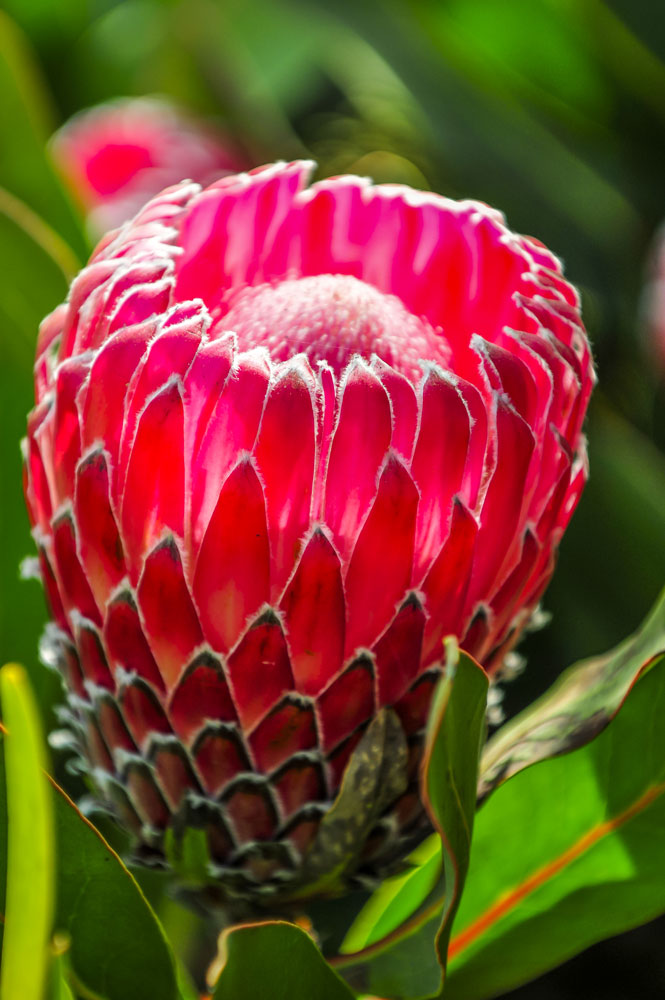
PRUNING
Pruning proteas improves the quality and quantity of flowers, helps reduce disease, extends the life of the plant and creates bushier, more compact plants. Young plants should be tip pruned after the first six months to a year after planting, generally in spring to late summer. They can be pruned again after the first flowering by cutting the flower stem 10cm above where it branches out from the main stem.
RELATED TO PRUNING PROTEAS: Step-by-step rose pruning guide
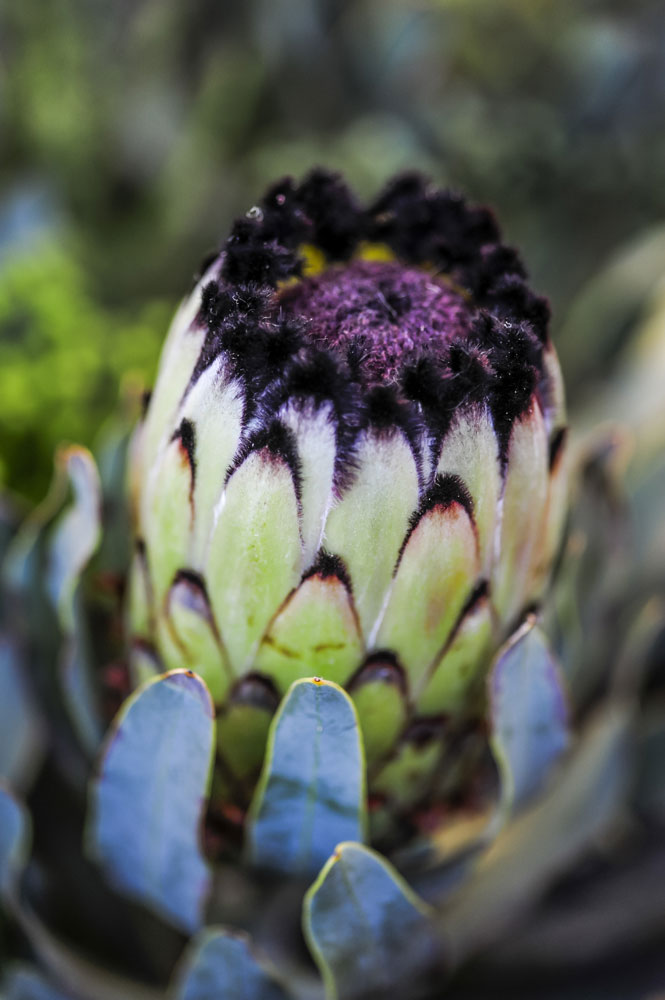
Cut out any weak and damaged stems. This encourages the remaining stems to produce healthier, more vigorous growth. Never remove more than 50 percent of the plant’s leaves and leave about 15cm of healthy leafy stem on which new shoots can develop.
For more on growing and maintaining proteas, visit sanbi.org

